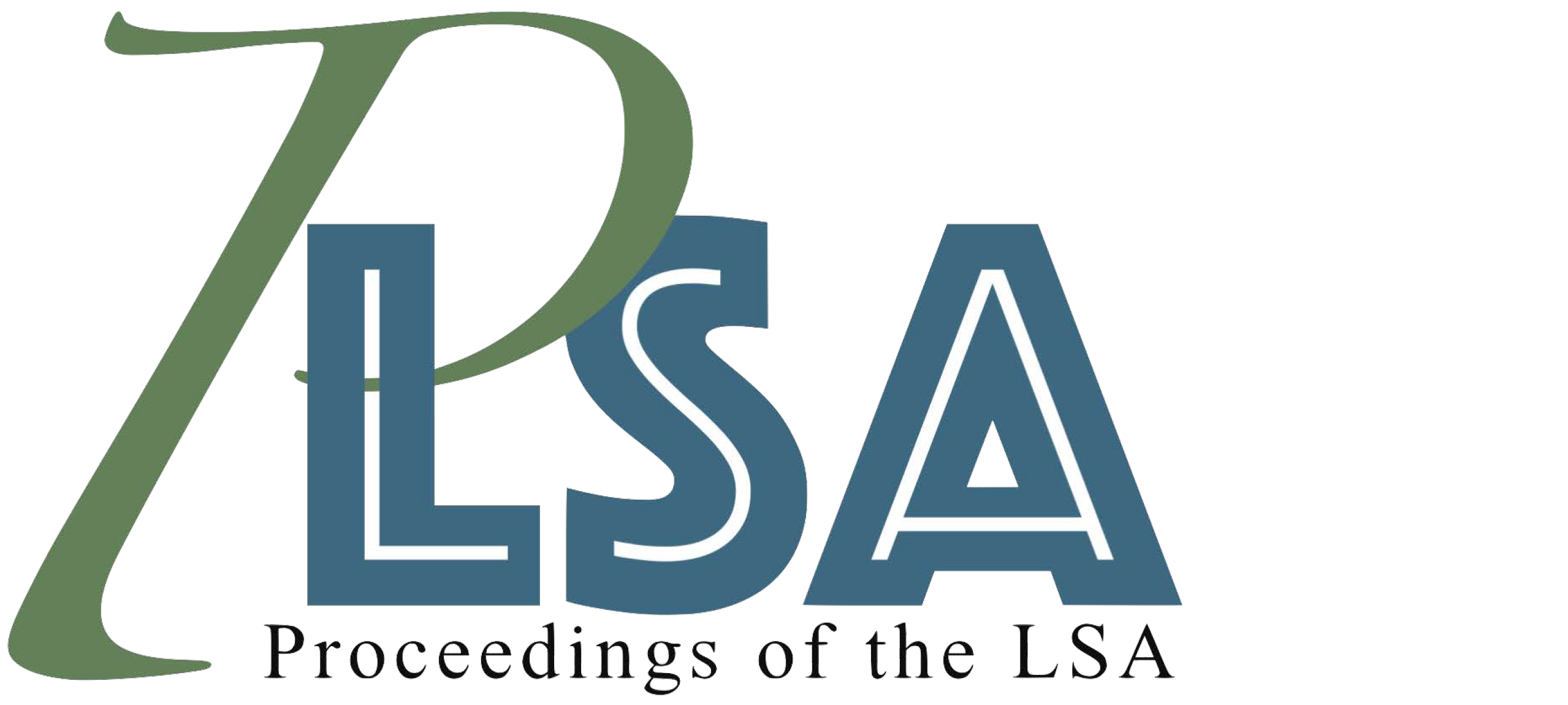What can wh-questions tell us about real-time language production: Evidence from English and Mandarin
DOI:
https://doi.org/10.3765/plsa.v3i1.4344Keywords:
sentence production, visual world eye-tracking, wh-questions, linguistic encoding, sentence formulationAbstract
We present two visual-world eye-tracking experiments investigating how speakers begin structuring their messages for linguistic utterances, a process known as linguistic encoding. Specifically, we focus on when speakers first linearize the abstract elements of their messages (positional processing) and when they first assign a grammatical role to those elements (functional processing). Experiment 1 de-coupled the process of linearization from grammatical role assignment using English object wh-questions, where the subject is no longer sentence initial. Experiment 2 used Mandarin declaratives and questions, which have the same word order, to test the extent to which findings from Experiment 1 were linked to information focus associated with wh-questions. We find evidence of both grammatical role assignment and linearization emerging around 400-600 ms, but we do not find evidence of the +/- wh distinction influencing eye-movements during that same time window.Downloads
Published
2018-03-03
Issue
Section
Articles
License
Published by the LSA with permission of the author(s) under a CC BY 4.0 license.
How to Cite
Do, Monica, Elsi Kaiser, and Pengchen Zhao. 2018. “What Can Wh-Questions Tell Us about Real-Time Language Production: Evidence from English and Mandarin”. Proceedings of the Linguistic Society of America 3 (1): 46:1–12. https://doi.org/10.3765/plsa.v3i1.4344.
